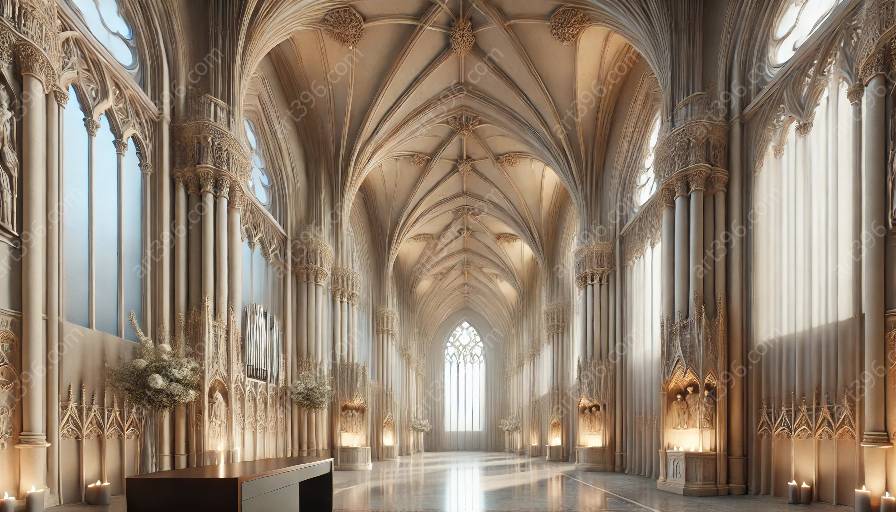Gothic architecture has had a profound influence on the concept of sacred space and religious experience throughout history. This style of architecture emerged in the Middle Ages, characterized by its pointed arches, ribbed vaults, and flying buttresses, creating awe-inspiring structures that were intended to elevate the spiritual experience of worshippers.
Gothic Architecture and Sacred Space
One of the defining features of Gothic architecture is its verticality, which was meant to draw the eyes and hearts of believers to the heavens. The use of tall spires and soaring ceilings sought to create a sense of transcendence, making the physical space feel closer to the divine. The majestic cathedrals and churches built in the Gothic style were designed to inspire awe and reverence, setting the stage for a profound religious experience.
Impact on Religious Experience
The architectural elements of Gothic buildings, such as stained glass windows and intricate carvings, were used to convey stories from religious texts and inspire contemplation. The play of light and shadow through the windows would create a mystical atmosphere, enhancing the spiritual journey of those within the sacred space. The grandeur and beauty of Gothic structures were intended to uplift the soul and evoke a sense of the divine presence, shaping the religious experience of the worshipper.
Influence on Architectural Design
The Gothic style revolutionized the design and construction of religious buildings, setting a new standard for sacred architecture. Its emphasis on height and light, as well as the introduction of pointed arches and ribbed vaults, altered the way spaces were constructed and experienced. The concept of sacred space was redefined, with Gothic architecture providing a template for future religious structures for centuries to come.
Conclusion
Gothic architecture has left an indelible mark on the understanding of sacred space and religious experience. Its soaring structures, intricate detailing, and focus on creating a sense of awe have shaped the way we perceive and interact with spiritual spaces. The influence of Gothic architecture continues to resonate in contemporary religious buildings, serving as a testament to its enduring impact on the concept of sacred space and religious experience.









































